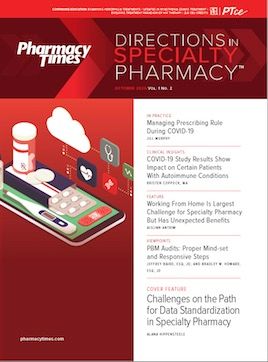Idiopathic Pulmonary Fibrosis: Pharmacologic Advances in Clinical Progression
A presentation titled Idiopathic Pulmonary Fibrosis: The Specialty Pharmacist’s Role in Patient Care and Population Management featured 2 experts discussing updates in the treatment of idiopathic pulmonary fibrosis (IPF), augmented with video clips recorded by a patient with a diagnosis of IPF.
In the virtual 2020 Asembia Specialty Pharmacy Summit presentation titled Idiopathic Pulmonary Fibrosis: The Specialty Pharmacist’s Role in Patient Care and Population Management, 2 experts discussed updates in the treatment of idiopathic pulmonary fibrosis (IPF). The presentation was especially powerful because the discussion was augmented with video clips recorded by a patient with a diagnosis of IPF.
Lisa Lancaster, MD, covered IPF’s epidemiology, risk factors, and symptoms. This chronic, progressive fibrosing interstitial pneumonia stymies researchers; to date, they have not identified a cause. Patients are often frustrated by misdiagnosis or diagnostic delay. Most of the 30,000 to 40,000 Americans who have IPF are older adults. They often report a dry hacking cough, shortness of breath, anorexia, fatigue, and weight loss among other symptoms. A patient’s prognosis varies, but roughly half of patients die within 2 years of diagnosis.
Treatment goals are to slow disease progression, and improve symptoms and patient quality of life. In addition to discussing basic supportive care, Dr Lancaster stressed treating comorbidities aggressively, considering there are only 2 FDA-approved medications, the antifibrotics nintedanib and pirfenidone. The latest research confirms her assertion that antifibrotics significantly reduce the decline in respiratory function for patients with IPF.
Cari Pao, PharmD, MBA, MSHCM, indicated that pharmacists and payers have ample opportunity to improve clinical outcomes in IPF. She described how patients’ lives revolve around symptom management and treatments. She urged specialty pharmacists to monitor for anxiety and depression, which are common. She also discussed costs associated with pharmacologic treatments, emphasizing antifibrotic therapy. These expenses are significant and justify close monitoring for adverse effects, drug interactions, and ensuring patient adherence.
In addition to vigilance for drug interactions, pharmacists can assist patients with comorbid conditions such as gastroesophageal reflux disease, obesity, and smoking cessation. They can also help ensure patients’ immunizations are current.
The presentation ended with a robust question and answer session, during which Dr Lancaster and Dr Pao stressed strong communication among the medical team, patients, and caregivers.
Visit PTCE online to access more content on atypical hemolytic uremic syndrome and the role of the specialty and infusion pharmacist at www.pharmacytimes.org.

